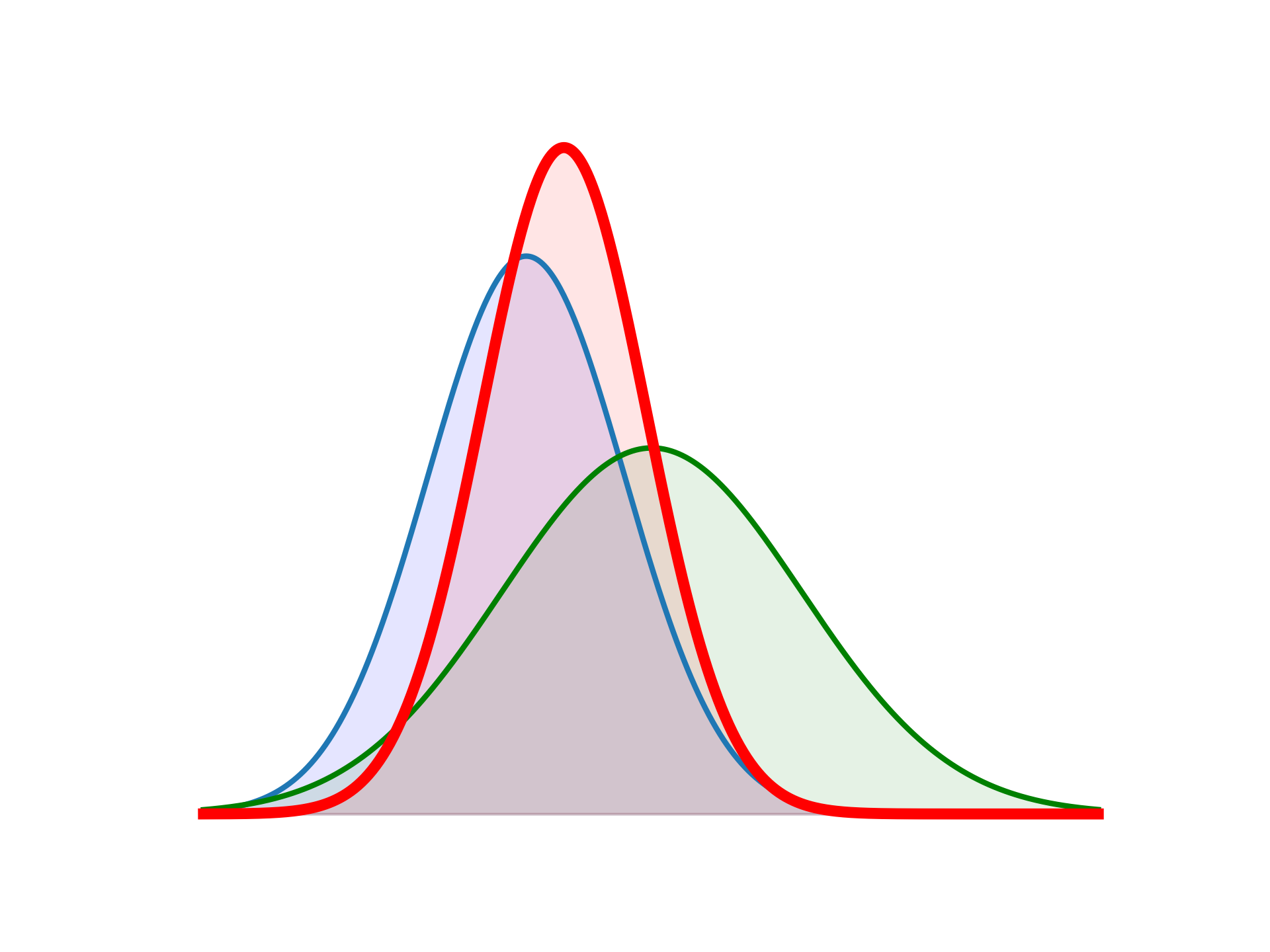8 Nonlinear Kalman Filters
8.1 Introduction
Recall that the Kalman filter can be used for
- state estimation—this is the direct filtering (or smoothing) problem
- parameter estimation—this is the inverse problem based on filtering with a pseudo-time
Kalman filters are linear (and Gaussian) or nonlinear. Here we will formulate the basic nonliner filter, known as the extended Kalman filter.
8.2 Recall: Kalman filter problem - general formulation
We present a very general formulation that will later be convenient for joint state and parameter estimation problems. Consider a discrete-time nonlinear dynamical system with noisy state transitions and noisy observations that are also noinlinear.
We consider a discrete-time dynamical system with noisy state transitions and noisy observations.
Dynamics:
\[v_{j+1} = \Psi(v_j) + \xi_j, \quad j \in \mathbb{Z}^+\]
Observations:
\[y_{j+1} = h (v_{j+1}) + \eta_{j+1}, \quad j \in \mathbb{Z}^+\]
Probability (densities):
\[v_0 \sim \mathcal{N}(m_0,C_0), \quad \xi_j \sim \mathcal{N}(0,\Sigma), \quad \eta_j \sim \mathcal{N}(0,\Gamma)\]
Probability (independence):
\[v_0 \perp {\xi_j} \perp {\eta_j}\]
Operators:
\[\begin{eqnarray} \Psi \colon \mathcal{H}_s &\mapsto \mathcal{H}_s, \\ h \colon \mathcal{H}_s &\mapsto \mathcal{H}_o, \end{eqnarray}\] where \(v_j \in \mathcal{H}_s,\) \(y_j \in \mathcal{H}_o\) and \(\mathcal{H}\) is a finite-dimensional Hilbert space.
Filtering problem:
Estimate (optimally) the state \(v_j\) of the dynamical system at time \(j,\) given the data \(Y_j = \{y_i\}_{i=1}^{j}\) up to time \(j.\) This is achieved by using a two-step predictor-corrector method. We will use the more general notation of (Law, Stuart, and Zygalakis 2015) instead of the usual, classical state-space formulation that is used in (Asch, Bocquet, and Nodet 2016) and (Asch 2022).
The objective here is to update the filtering distribution \(\mathbb{P}(v_j \vert Y_j),\) from time \(j\) to time \(j+1,\) in the nonlinear, Gaussian case, where
- \(\Psi\) and \(h\) are nonlinear functions,
- all distributions are Gaussian.
Suppose the Jacobian matrices of \(\Psi\) and \(h\) exist, and are denoted by
\[\begin{eqnarray} \Psi_x(v) &= \left[ \frac{\partial \Psi}{\partial x} \right]_{x=m},\\ h_x(v) &= \left[ \frac{\partial h}{\partial x} \right]_{x=m}. \end{eqnarray}\]
- Let \((m_j, C_j)\) denote the mean and covariance of \(v_j \vert Y_j\) and note that these entirely characterize the random variable since it is Gaussian.
- Let \((\hat{m}_{j+1}, \hat{C}_{j+1})\) denote the mean and covariance of \(v_{j+1} \vert Y_j\) and note that these entirely characterize the random variable since it is Gaussian.
- Derive the map \((m_j, C_j) \mapsto (m_{j+1}, C_{j+1})\) using the previous step.
8.2.1 Prediction/Forecast
\[ \mathbb{P}(v_n \vert y_1, \ldots, y_n) \mapsto \mathbb{P}(v_{n+1} \vert y_1, \ldots, y_n) \]
P0: initialize \((m_0, C_0)\) and compute \(v_0\)
P1: predict the state, measurement
\[\begin{align} v_{j+1} &= \Psi (v_j) + \xi_j \\ y_{j+1} &= h (v_{j+1}) + \eta_{j+1} \end{align}\]
P2: predict the mean and covariance
\[\begin{align} \hat{m}_{j+1} &= \Psi (m_j) \\ \hat{C}_{j+1} &= \Psi_x C_j \Psi_x^{\mathrm{T}} + \Sigma \end{align}\]
8.2.2 Correction/Analysis
\[ \mathbb{P}(v_{n+1} \vert y_1, \ldots, y_n) \mapsto \mathbb{P}(v_{n+1} \vert y_1, \ldots, y_{n+1}) \]
C1: compute the innovation
\[ d_{j+1} = y_{j+1} - h (\hat{m}_{j+1}) \]
C2: compute the measurement covariance
\[ S_{j+1} = h_x \hat{C}_{j+1} h_x^{\mathrm{T}} + \Gamma \]
C3: compute the (optimal) Kalman gain
\[ K_{j+1} = \hat{C}_{j+1} h_x^{\mathrm{T}} S_{j+1}^{-1} \]
C4: update/correct the mean and covariance
\[\begin{align} {m}_{j+1} &= \hat{m}_{j+1} + K_{j+1} d_{j+1}, \\ {C}_{j+1} &= \hat{C}_{j+1} - K_{j+1} S_{j+1} K_{j+1}^{\mathrm{T}}. \end{align}\]
8.2.3 Loop over time
- set \(j = j+1\)
- go to step P1
8.3 State-space formulation
In classical filter theory, a state space formulation is usually used.
\[\begin{eqnarray} && x_{k+1} = f (x_k) + w_k \\ && y_{k+1} = h (x_k) + v_k, \end{eqnarray}\]
where \(f\) and \(h\) are nonlinear, differentiable functions with Jacobian matrices \(D_f\) and \(D_h\) respectively, \(w_k \sim \mathcal{N}(0,Q),\) \(v_k \sim \mathcal{N}(0,R).\)
The 2-step filter:
8.3.1 Initialization
\[ x_0, \quad P_0 \]
8.3.2 1. Prediction
\[\begin{eqnarray} && x_{k+1}^- = f (x_k) \\ && P_{k+1}^- = D_f P_k D_f^{\mathrm{T}} + Q \end{eqnarray}\]
8.3.3 2. Correction
\[\begin{eqnarray} K_{k+1} && = P_{k+1}^{-} D_h^{\mathrm{T}} ( D_h P_{k+1}^{-} D_h^{\mathrm{T}} + R )^{-1} \quad (= P_{k+1}^- D_h^{\mathrm{T}} S^{-1}) \\ x_{k+1} &&= x_{k+1}^{-} + K_{k+1} (y_{k+1} - h (x_{k+1}^-) ) \\ P_{k+1} &&= (I - K_{k+1} D_h ) P_{k+1}^- \quad (= P_{k+1}^- - K_{k+1} S K^{\mathrm{T}}_{k+1}) \end{eqnarray}\]
8.3.4 Loop
Set \(k = k+1\) and go to step 1.
8.4 Other nonlinear filters
- unscented Kalman filter
- particle filter
For details, please consult the references.
